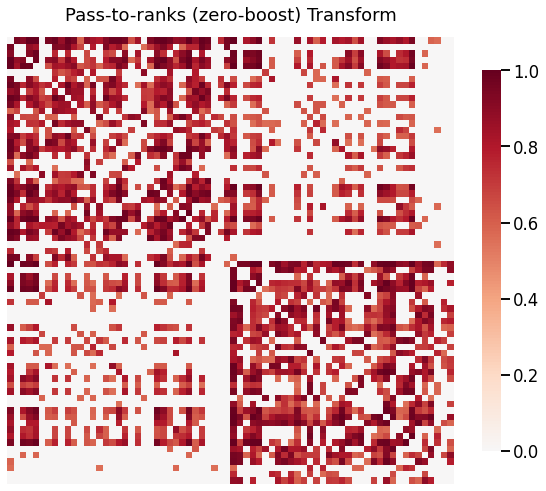Heatmap: Visualizing a Graph¶
This example shows how to visualize graphs using a heatmap.
[1]:
import graspologic
import numpy as np
%matplotlib inline
Plotting graphs using heatmap¶
Simulate graphs using weighted stochastic block models¶
The 2-block model is defined as below:
\begin{align*} P = \begin{bmatrix}0.8 & 0.2 \\ 0.2 & 0.8 \end{bmatrix} \end{align*}
We generate two weight SBMs where the weights are distributed from a Poisson(3) and Normal(5, 1).
[2]:
from graspologic.simulations import sbm
n_communities = [50, 50]
p = [[0.8, 0.2],
[0.2, 0.8]]
wt = np.random.poisson
wtargs = dict(lam=3)
A_poisson= sbm(n_communities, p, wt=wt, wtargs=wtargs)
wt = np.random.normal
wtargs = dict(loc=5, scale=1)
A_normal = sbm(n_communities, p, wt=wt, wtargs=wtargs)
Plot the simulated weighted SBMs¶
[3]:
from graspologic.plot import heatmap
title = 'Weighted Stochastic Block Model with Poisson(3)'
fig= heatmap(A_poisson, title=title)
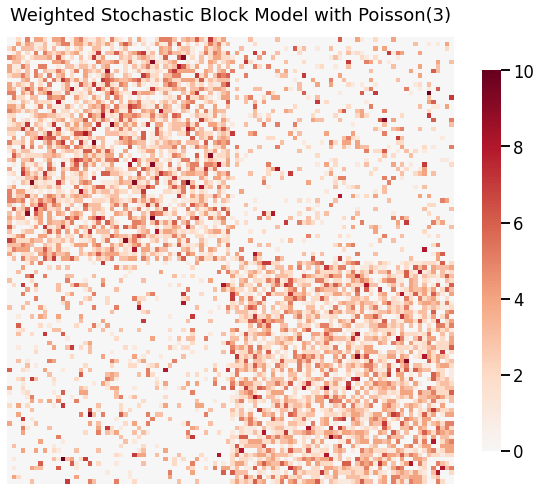
[4]:
title = 'Weighted Stochastic Block Model with Normal(5, 1)'
fig= heatmap(A_normal, title=title)
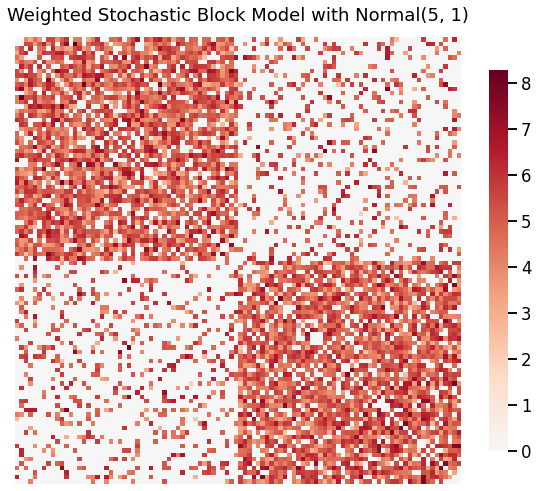
You can also change color maps¶
See here for a list of colormaps
[5]:
title = 'Weighted Stochastic Block Model with Poisson(3)'
fig= heatmap(A_poisson, title=title, transform=None, cmap="binary", center=None)
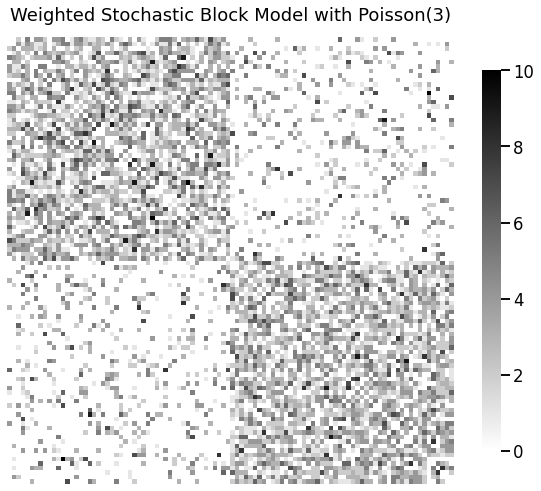
Data transformations¶
When your graphs have values that span a large range, it is often useful to transform the data in order to visualize it properly. Below, we use a real graph which is estimated from the a structural MRI scan. The data is provided by HNU1.
The data ranges from 0 to 44813, and visualizing without a transformation will emphasize the large weights. Both log and pass-to-ranks transforms provide better visualizations of the graph.
[6]:
G = np.load('./data/sub-0025427_ses-1_dwi_desikan.npy')
print((np.min(G), np.max(G)))
(0.0, 44813.0)
Without transform¶
[7]:
title = 'Without Transformation'
fig= heatmap(G, title=title, transform=None)
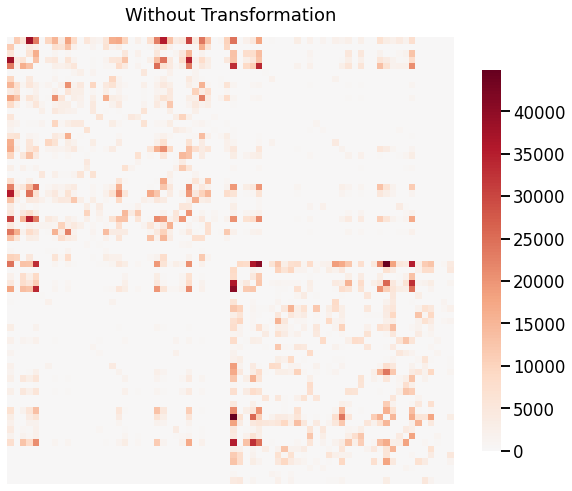
With log transform¶
[8]:
title = 'Log Transform'
fig= heatmap(G, title=title, transform='log')
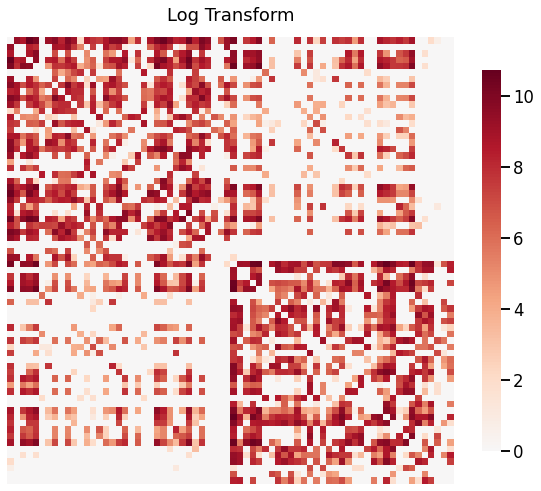
With pass to ranks¶
[9]:
title = 'Pass-to-ranks (zero-boost) Transform'
fig= heatmap(G, title=title, transform='zero-boost')
